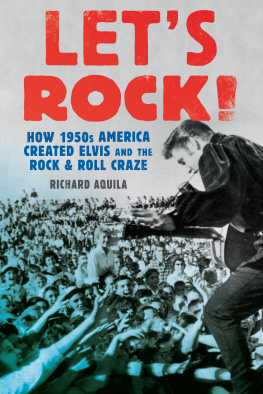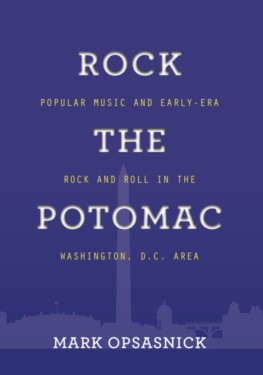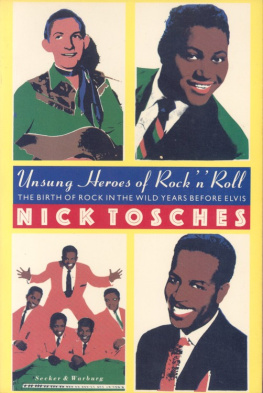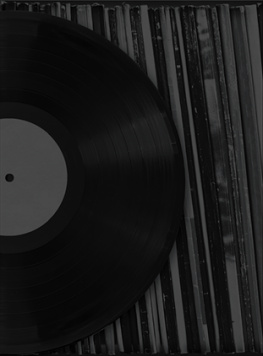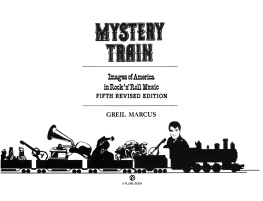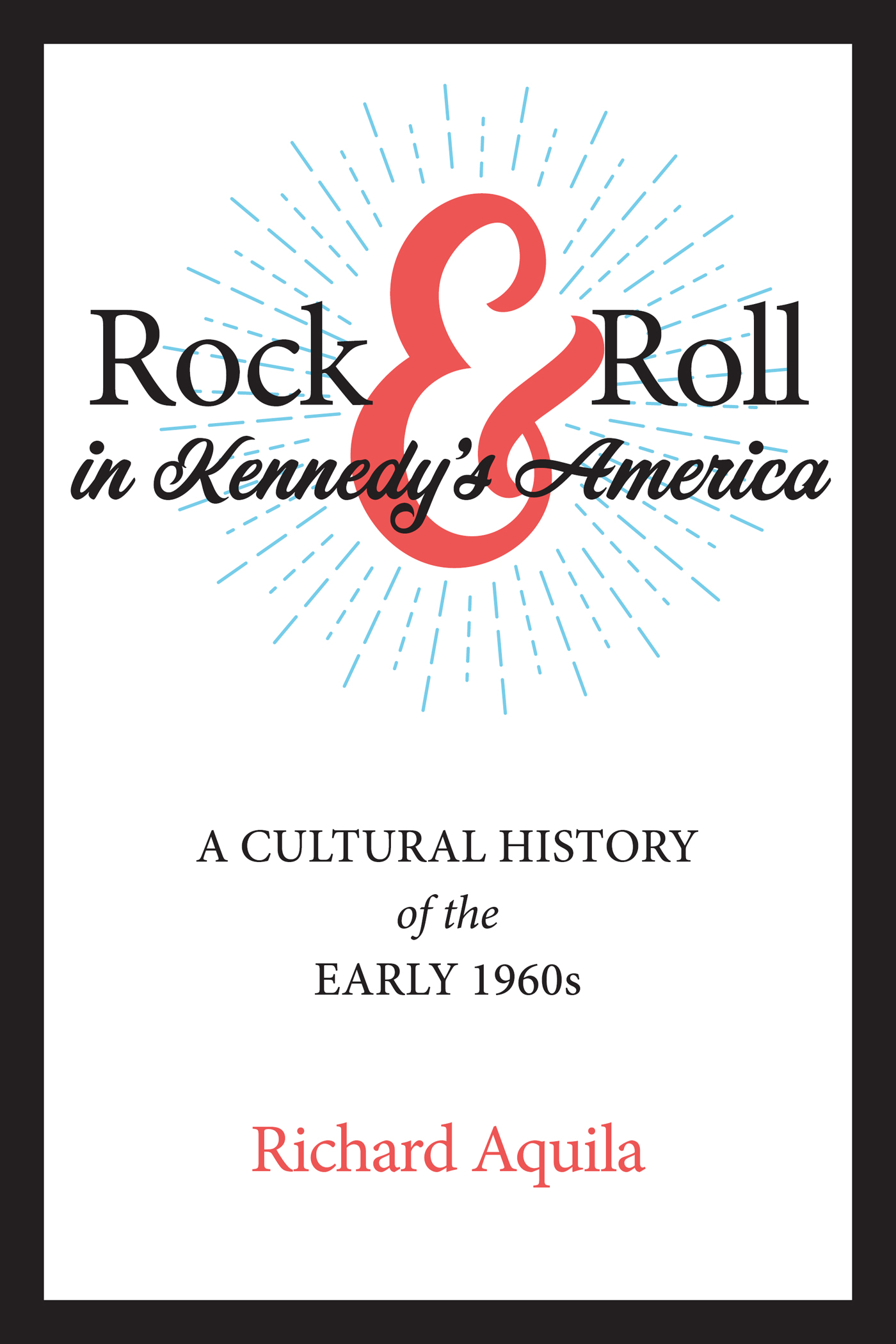Contents
Guide
Rock & Roll
in Kennedys America
Rock & Roll
in Kennedys America
A CULTURAL HISTORY of the EARLY 1960s
Richard Aquila

Johns Hopkins University Press
Baltimore
2022 Richard Aquila
All rights reserved. Published 2022
Printed in the United States of America on acid-free paper
9 8 7 6 5 4 3 2 1
Johns Hopkins University Press
2715 North Charles Street
Baltimore, Maryland 21218
www.press.jhu.edu
Library of Congress Cataloging-in-Publication Data
Names: Aquila, Richard, 1946 author.
Title: Rock & roll in Kennedys America : a cultural history of the early 1960s / Richard Aquila.
Other titles: Rock and roll in Kennedys America
Description: Baltimore : Johns Hopkins University Press, 2022. | Includes bibliographical references and index.
Identifiers: LCCN 2021062979 | ISBN 9781421444987 (hardcover) | ISBN 9781421444994 (ebook)
Subjects: LCSH: Rock musicUnited States19611970History and criticism. | Rock musicSocial aspectsUnited StatesHistory20th century.
Classification: LCC ML3534.3 .A76 2022 | DDC 781.660973/09046dc23
LC record available at https://lccn.loc.gov/2021062979
A catalog record for this book is available from the British Library.
Special discounts are available for bulk purchases of this book. For more information, please contact Special Sales at specialsales@jh.edu.
For Marie
Rock & Roll
in Kennedys America
Introduction
Only in America
J ay and the Americans Only in America appeared on the pop charts at the height of President John F. Kennedys popularity. It peaked at number 25 on Billboard s Top 100 just weeks after Martin Luther King Jr. delivered his I Have a Dream speech at the March on Washington on August 28, 1963. Composed by legendary songwriters Jerry Leiber, Mike Stoller, Barry Mann, and Cynthia Weil, the upbeat song was a perfect fit for the optimistic, patriotic mood of the nation. The lyrics about young love were set against a red, white, and blue backdrop that portrayed America as a land of freedom and equality where anyone could strike it rich or grow up to be president. Even the songs message about young love plugged into American exceptionalism. With trumpets blaring, the lead singer proclaims, Only in America, land of opportunity, would a classy girl like you fall for a poor boy like me.
Ironically, the story behind the 1963 hit reveals a darker side of the American experience. Producers Leiber and Stoller initially recorded the song with the Drifters, a talented R&B rock group best known for their number 1 hit, Save the Last Dance for Me (1960). Given racial tensions of the day, the Drifters Atlantic label refused to release a record that featured a Black group singing about equal opportunity. Leiber and Stoller went back into the studio and overdubbed new vocals by a white group, Jay and the Americans. Given their name, we figured Jay and the boys would have no problems with Only in America, explains Leiber. It changed from a satirical social protest song into a flag-waving piece of patriotism. And, wouldnt you know itthe damn thing took off like a rocket. The Drifters original recording and Jay and the Americans subsequent Top 30 hit illustrate the connectionssometimes obvious, sometimes notbetween rock & roll and life in the early 60s.
Rock & Roll in Kennedys America offers a fresh look at the early 1960s through the prism of rock & roll. The book revisits all the memorable hits and misses heard on American Bandstand and Top 40 radio stations across the country. Although playlists were dominated by rock & roll, they also included traditional pop, folk music, novelty records, country songs, and other records that targeted young audiences. The diverse music provided a rock & roll soundtrack for millions of teenagers in high school between 1960 and 1964. But this book isnt just about music. The backstory involves the first baby boomers in high school, a ubiquitous Cold War culture, a booming economy, a blossoming civil rights movement, signs of rising feminism, and ultimately the tragic death of a handsome young president.
Despite the quality and cultural importance of early 1960s rock & roll, the music was soon forgotten. The coming of the Beatles changed rock & roll forever. Among the casualties of the British Rock Invasion of 1964 were most of the American rock stars who had dominated the charts since the 1950s. Early 60s rock & roll fell by the wayside as musical styles changed to keep pace with the political and social turmoil of the late 60s and early 70s. Subsequently, the early 60s were swept into the dustbin of rock & roll history. Relatively few performers from that era have been inducted into the Rock & Roll Hall of Fame, and many critics and fans now dismiss the early 60s as a low point for rock & roll. Not everyone agrees. There was a lot of great music in the early 60s, insists Bobby Vee, who had 11 hits on the Top 40 charts in those years, including a number 1 record, Take Good Care of My Baby. But, people just sort of forgot about it because it was sandwiched in between two major erasthe coming of Elvis in the 1950s and the Beatles in the mid-1960s.
As the 1970s dawned, both early 60s rock & roll and Kennedys America were just distant memories of a more innocent time. A new common wisdom took hold, insisting that rock & roll was on the decline in the early 60s and would not bounce back until the Beatles arrived on the scene in the mid-60s. Don McLeans 1971 record American Pie went even further. It pinpointed the day the music diedtracing it back to a plane crash in a snowy Iowa cornfield on February 3, 1959, that took the lives of rock & roll stars Buddy Holly, Ritchie Valens, and the Big Bopper. The tragic tale about rock & rolls demise sounds plausible at first. Problem is, it just isnt true.
THE DAY THE MUSIC DIDNT DIE
Although some experts and fans realize that quality rock & roll existed in the early 60s, the myth of rock & rolls passing has become reality for too many casual observers. One of the goals of this book is to set the rock & roll record straight. Contrary to popular opinion, the music did not die on that cold February morning in 1959. Not only was rock & roll alive and kicking in the early 60s, but it was thriving. It didnt fade until after 1963, when it became a casualty of the same cataclysmic forces that overwhelmed the rest of America during the tumultuous decade known as the sixties.
This book reclaims the lost history of early 60s rock & roll. The dramatic tale stars talented country rockers like Elvis Presley, Brenda Lee, and Roy Orbison; innovative R&B rock artists such as Ray Charles, Smokey Robinson, Mary Wells, Sam Cooke, and the Shirelles; outstanding pop rockers like Dion, Connie Francis, the Beach Boys, Lesley Gore, Del Shannon, and the 4 Seasons; and hundreds of other singers and musicians, including pop artists and folk singers who earned hit records with songs aimed at young audiences. The soundtrack features many of rock & rolls greatest hits, including the Shirelles Will You Love Me Tomorrow, Dions Runaround Sue, U.S. Bonds Quarter to Three, and the Kingsmens Louie Louie, as well as more obscure rock gems like Wanda Jacksons Lets Have a Party and the Lafayettes Lifes Too Short.


